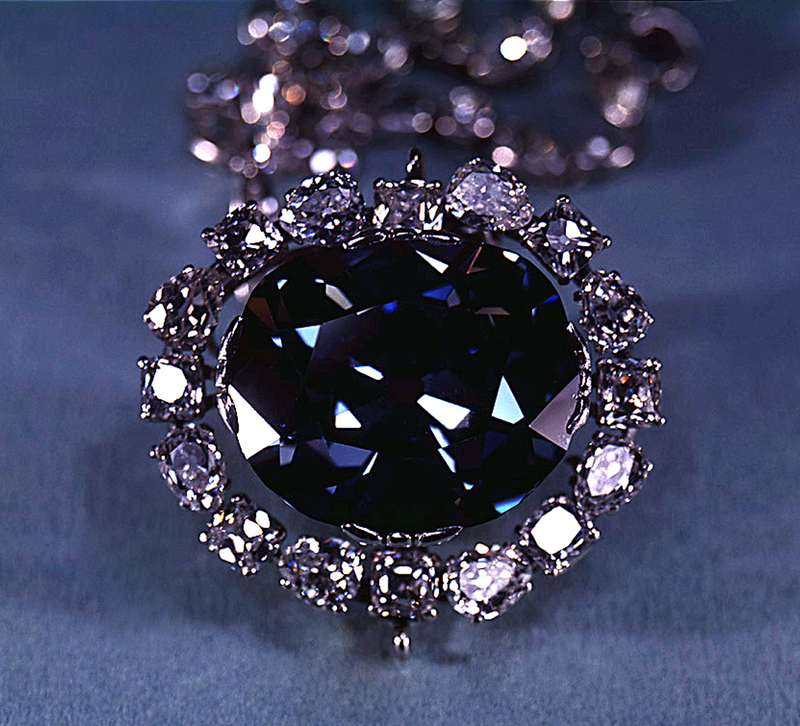The History of the Hope Diamond and its Relation to Bar Harbor – Part I
published february 14, 2023 | written by Emily cough | edited by bhhs staff

Part I – The Hope Diamond Origins
The Hope Diamond, a legendary and illustrious gem, captivates the world with its mesmerizing beauty and storied history. Weighing an impressive 45.52 carats, this deep blue diamond is renowned for its exceptional size and exquisite color, characterized by a rich blue hue. Currently housed in the National Gem and Mineral Collection at the Smithsonian Institution’s National Museum of Natural History in Washington, D.C.; the Hope Diamond has become an iconic symbol of both beauty and mystery–-a reputation enhanced by the supposed curse attached to it.
The famous blue gem has left an indelible mark on popular culture, making appearances in various forms of media over the years. Its mysterious allure and legendary curse have inspired numerous novels, films, and even an animated series.
The real story of the Hope Diamond is much more fascinating than portrayed on screen—the legendary gem has its origins sheathed in mystery. And as it turns out, a lot of fiction as well.
The Genesis of the Gem
A French merchant traveler by the name of John Baptiste Tavernier begins our story.
Plucking the diamond straight from the head of a Hindu idol in India circa 1642, Tavernier, it is said, began a streak of curses that is believed to be associated with the jewel. Whether by vengeful Hindu gods and goddesses or pure happenstance, the story ends tragically for Tavernier, for he was mauled to death by a pack of dogs (The Daily Oklahoman 1958)
Although, with even more mystery, according to multiple sources there are plenty of discrepancies with this account.
To begin his story, Tavernier was very familiar with exploration and worldly exploits, as “the son of an engraver and geographer” (Harlow 2012). By 16, Tavernier was already following in his father’s footsteps by becoming a jeweler-merchant.
Throughout the years, Tavernier traveled to far distant lands; the Levant, Persia, Baghdad, and South Asia, which included India, became some of his most famous exploits. Famous enough to attract a certain ostentatious French king, in fact—but we’ll get to him in Part 2.
India was a treasure trove for Tavernier. During his voyages there, the French merchant came across and bought some of the world’s now-most famous gems and jewels: the Great Mogul, a 279.56 carat diamond (likely now is the Orlov diamond); the lost 137.27 carat Florentine diamond; the 242.5 carat pink, believed-to-be Great Table diamond; and of course, the famed, Hope Diamond.
From Tavernier’s travels from India, join us next week as we head to France, where the blue gem will undergo a few transformations.
Continue to journey along with us in our multi-part series as the tale of the Hope Diamond unfolds; from the intrigue, transformation, thievery, and supposed curse of the famed gem, its story has only just begun.
Reference List
Harlow, George E. 2012. “The Buyer’s Guide to India, Circa 1678.” In Natural Histories: Extraordinary Rare Book Selections from the American Museum of Natural History Library, edited by Tom Baione, 21–22. New York: Sterling Signature.
The Daily Oklahoman. 1958. “Storied Diamond Going to Museum,” November 8, 1958.
